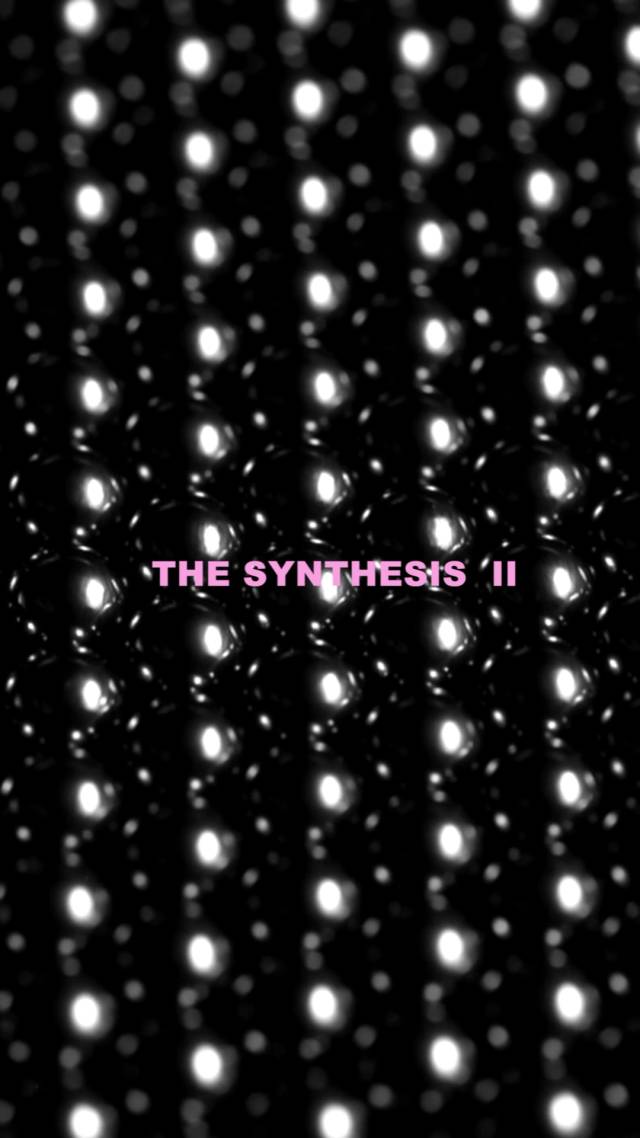吴鼎所作“极限的节奏 II”自证是一个工具箱,里面充满了制造的、人工的、分布的图像,将过去一个世纪中步入公共领域并支配了观看方式的理想白立方情境及其文化、地理、政治和历史的面向一一环绕。每个图像,不论移动或静止,都衍生自艺术家对于白立方作为标准感知场所具备强度的判断,随即贡献于他自己就实在化的白立方空间机能的关注,尤其是针对自我的技术与支配的技术之间的对立。这组福柯式的概念建立了一个意图去除性别的性别成分与阶级的阶级分层的确定性计划,艺术家籍此重新部署自身实践中相对固态的物质形式。
白立方长久以来被认为是控制文化的代表。谈及为艺术提供场所与背景支持的现代主义气息,布莱恩·奥多尔蒂把它定义为“试图求助于据称是存在与权力的先验模式而后通过抹去过去而掌控未来的过渡性机制”。[1] 吴鼎在更加泛化的语境中详细阐述了为应对白立方的抽象空间而形成的同化和顺应的心理机制,将其挪用为开启其建造性的一种脚本图式。

吴鼎,《#1》,2017年,录像,1分27秒 | WU Ding, #1, 2017, video, 1'27"
利用展览作为建造环境的适应性,艺术家引用了公社交往模式——社会浓缩器——一种受到苏联构成主义拥护的社会主义原型,在这个工具箱内部折叠出社会工程的秩序,致使其中所有图像得以艺术化。社会浓缩器旨在谋取集体主义的最理性型与相应的空间形式以塑造穿梭其中的人类主体的本质。[2] 吴鼎也有着追求这类型感知的洁癖。与此同时,不顾意识形态的区别,他设想到在任何社会的公民生活中“去人化”的未来。然而,艺术家却认为人类最终是一无是处,也没有什么最终是保存人性的。
为了将“极限的节奏 II”的形成实现为一种全能状态并以适当的治理术作为填料,吴鼎创造了一个兼具打扫功能与看守功能的照料者作为角色样板,扮演着治理白立方浓缩器的清洁/保管主体。它看不见、摸不着,却弥漫在展厅的任意角落:笼罩在高亮度的均匀照明里,延伸于无尽的蓝色地板中——一种消极的、刻板化的颜色,在大众时代维护着公共卫生的城市意象。它的无产阶级性逐渐消失在自己的专制中。本着这一脉络,主体的身体与吴鼎的图像相互结合出新的线路,可以依附于白立方浓缩器并在其中安置多重架构层次,且确保多重架构层次本身就是白立方浓缩器。

吴鼎,《合成 II》,2017年,录像,2分29秒 | WU Ding, The Synthesis II, 2017, video, 2'29"
身体被转换为资本的载体。“极限的节奏 II”把每个观众的身体、甚至是吴鼎本人的身体累积成资本,用来完成劳动的剥削,目的是加速他那些基于形式语言学而生成的图像的流通。通过操纵清洁/保管主体的欲望,吴鼎成功地获得了如何以艺术家身份生活的知识。清洁/保管主体迫切地想要把自己从不得已的禁锢中解放出来,也就是地面,并且无可等待地紧紧盯着纯白墙面,在白立方浓缩器中视觉快感能够显现并被消费的唯一目的地。这样的展览优化配方终究是让艺术家即刻成为了资本家,不仅掌握了“最佳观看”并且赢取了绝对回报。
在这里我们看到了时至今日所谓艺术系统里内在的秩序。

吴鼎,《节奏囊括形式,包含形式于自身》,2017年,灯箱,250 × 350 × 9 厘米 | WU Ding, Rhythm Embracing Form, Including Form into Itself, 2017, light box, 250 × 350 × 9 cm
“The Ultimate of Rhythm II” by WU Ding manifests itself as a tool box of manufactured, artificial and distributed images, encompassing the cultural, geographical, political and historical aspects of the ideal white-cube situation which dominates the ways of seeing in the public realm of the past century. Each image, either moving or still, derives from the artist’s findings on the intensity of white-cube as a standard perceptual field and thus contributes to his own programmatic concern about the opposites of the technologies of the self and the technologies of domination amid its literalized space. The Foucauldian conceptual duo draws up the deterministic schedule of de-sexing genders and de-stratifying classes for the artist to further re-deploy the crystallized material forms in his practice.
White-cube has long been recognized as the embodiment of control culture. Speaking of the modernist atmosphere accommodating and backgrounding art, Brian O’Doherty defined it as “a transitional device that attempted to bleach out the past arid at the same time control the future by appealing to supposedly transcendental modes of presence and power.”[1] WU elaborates upon the psychological mechanism of assimilation and acclimation against the abstract space of white-cube in a more generalized context and appropriates it into a schema of script that enables the development of its constructiveness.

吴鼎,《真实的节奏并不是来自于精确的序列器 No.4》,2017年,艺术微喷,70 × 50 厘米 | WU Ding, The Real Rhythm Does not Come From an Accurate Sequencer No.4, 2017, archival inkjet print, 70 × 50 cm
Taking advantage of the flexibility of exhibition as a built environment, the artist borrows the communal modes of interaction – the social condenser – a socialist prototype advocated by Soviet constructivist theory, to replicate the process of social engineering inside the tool box for the artification of all the images within. The social condenser was designed to seek the most rational type of organization of collectivism and its spatial form shaped the nature of the human subjects who passed through it.[2] WU also pursues such hygiene of perception and conceives the future of “proletarianization” in civic life in any society, despite the difference in ideology. However, he thinks that human is ultimately nothing and nothing is ultimately human.
In order to realize the formation of “The Rhythm of Ultimate II” as a total state filled with proper governmentality, WU invents the role model of a custodian cleaner and caretaker who plays the part of the janitorial subject governing the white-cube condenser. It is invisible and intangible, but everywhere in the gallery – enveloped in the even lighting of high luminance and extending along the floor in negatively stereotypical blue that maintains the urban image of sanitation in the mass age. Its proletarianism is becoming lost in its dictatorship. In this vein, the body of the subject and the assembly of WU’s images get married to each other to create new circuits, which are able to install multiple architectural layers attached to the white-cube condenser and to guarantee that the architecture itself is the white-cube condenser.

吴鼎,《序列 No.1》,2017年,灯箱,24 × 30 × 5 厘米 | WU Ding, Sequence No.1, 2017, light box, 24 × 30 × 5 cm
The body has transformed into the carrier of capital. “The Rhythm of Ultimate II” capitalizes the body of every spectator, and possibly even WU himself, for the exploitation of labor to accelerate the circulation of his images based on formal linguistics. By manipulating the desire of the janitorial subject, WU succeeds in gaining the knowledge of how to live as an artist. The janitorial subject is dying to extricate itself from where it lies prostrate—the ground surface, and cannot wait to keep its eye on the absolutely white walls, the only destination for visual pleasures to turn up and to be consumed in the white-cube condenser. Such an optimizing formulation of the exhibition would eventually make the artist into an immediate capitalist who masters “optimal viewing” for absolute gain.
Here we see that the internal order of the art system, as we might claim today.
注释:
[1] [美] 布莱恩·奥多尔蒂著,⟨白立方之内:画廊空间的意识形态⟩(1976年)。[美] 安静主编,《白立方内外:当代艺术评论50年》(北京:生活·读书·新知三联书店,2017年)。
[2] [澳] 薄大伟,《单位的前世今生:中国城市的社会空间与治理》(南京:东南大学出版社,2014年)。
Notes:
[1] Brian O’Doherty, Inside the White Cube: The Ideology of the Gallery Space (San Francisco: The Lapis Press, 1986).
[2] David Bray, Social Space and Governance in Urban China: The Danwei System from Origins to Reform (Stanford: Stanford University Press, 2005).
©文章版权归属原创作者,如有侵权请后台联系删除